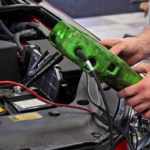Collecting coins is an exciting hobby that many people enjoy. Among the most popular coins for collectors are half dollars. Understanding half dollar values can help you make informed decisions as you start your collection. This guide will explain everything you need to know about half dollars, their history, and how to determine their value.
1. The History of Half Dollars
The half dollar has a long and interesting history in the United States. It was first minted in 1794, making it one of the earliest coins in American history. The half dollar was created to facilitate trade, and it has undergone many changes in design and composition over the years.
Early Half Dollars
The earliest half dollars were made of silver and featured various designs. The first half dollar featured the image of Liberty on the front and an eagle on the back. As time went on, different designs were introduced, reflecting the political and cultural climate of the time.
The Kennedy Half Dollar
One of the most famous half dollars is the Kennedy half dollar, which was introduced in 1964. This coin was created to honor President John F. Kennedy after his assassination. The Kennedy half dollar features a portrait of Kennedy on the front and the presidential seal on the back. It was initially made of 90% silver, but the composition changed in 1971 to include less silver due to rising costs.
2. How to Determine Half Dollar Values
When it comes to collecting half dollars, understanding their value is crucial. Several factors can affect the value of a half dollar, including its rarity, condition, and demand among collectors.
Rarity
Rarity plays a significant role in determining half dollar values. Some coins are produced in limited quantities, making them more desirable to collectors. For example, certain minting years or special editions may have fewer coins available, increasing their value.
Condition
The condition of a coin is another important factor in determining its value. Coins are graded based on their condition, ranging from “poor” to “mint.” A well-preserved coin in excellent condition will typically have a higher value than a coin that is worn or damaged.
Demand
The demand for specific half dollars also influences their values. If collectors are actively seeking a particular coin, its value may increase. Conversely, if a coin is abundant and not in high demand, its value may decrease.
3. Grading Half Dollars: The 70-Point Scale
To assess half dollar values accurately, it is essential to understand the grading system. The 70-point grading scale is widely used in the numismatic community to evaluate the condition of coins. Here’s a breakdown of the grading scale:
Mint State (MS)
- MS 60: A coin with significant imperfections but still uncirculated.
- MS 65: A coin that is well struck, with a few small marks or hairlines.
- MS 70: A perfect coin with no flaws.
Extremely Fine (EF)
- EF 40: A coin that has some wear but retains most of its details.
- EF 45: A coin with light wear, maintaining sharp details.
Very Fine (VF)
- VF 20: A coin with moderate wear, but all major details are visible.
- VF 30: A coin with more wear but still has a clear design.
Good (G)
- G 4: A heavily worn coin where details are fading but still recognizable.
- G 6: A worn coin, but with some design elements remaining.
Understanding this grading scale will help you evaluate half dollar values effectively.
4. Popular Half Dollar Series to Collect
There are several popular half dollar series that collectors often pursue. Each series has its unique characteristics and historical significance. Here are some notable half dollar series to consider for your collection:
Walking Liberty Half Dollar
Minted from 1916 to 1947, the Walking Liberty half dollar is beloved for its beautiful design by Adolph A. Weinman. The coin features Liberty walking confidently on the front and an eagle on the back. This series is highly sought after by collectors, especially coins from the early years.
Franklin Half Dollar
Produced from 1948 to 1963, the Franklin half dollar features a portrait of Benjamin Franklin on the front and the Liberty Bell on the back. This series is notable for its high silver content, making it a favorite among silver coin collectors.
Kennedy Half Dollar
The Kennedy half dollar, introduced in 1964, is still being minted today. Its design has remained largely unchanged, featuring the portrait of John F. Kennedy. Collectors often seek out special editions and coins from specific mint years.
5. Tips for Collecting Half Dollars
If you’re just starting your journey into collecting half dollars, here are some tips to help you along the way:
Educate Yourself
Knowledge is key when collecting half dollars. Read books, follow online forums, and visit numismatic websites to learn about the different types of half dollars, their history, and how to evaluate their value. The more you know, the better equipped you will be to make informed purchasing decisions.
Start Small
As a beginner, it’s a good idea to start with a few coins rather than trying to build a large collection right away. Focus on a specific series or era that interests you. This approach allows you to learn about half dollar values and the collecting process without feeling overwhelmed.
Use Trusted Sources
When purchasing half dollars, always use reputable dealers or platforms. This ensures that you are getting authentic coins and fair prices. Look for dealers who provide detailed descriptions and grading information for their coins.
Keep Records
Maintain a record of your collection, including the purchase price, grade, and any relevant details about each coin. This information will help you keep track of your investment and its potential value over time.
Join a Community
Connecting with other collectors can enhance your experience. Join local coin clubs or online forums where you can share your passion for half dollars, ask questions, and learn from experienced collectors.
Conclusion
Collecting half dollars can be a rewarding hobby, providing both enjoyment and potential financial benefits. By understanding half dollar values, the history behind these coins, and how to evaluate their condition, you can make informed decisions as you build your collection. Remember to educate yourself, start small, and connect with other collectors to enhance your experience. With time and dedication, you’ll become a knowledgeable half dollar collector, ready to explore the fascinating world of numismatics.
FAQs
1. What are half dollar values based on?
Half dollar values are determined by factors such as rarity, condition, and demand among collectors.
2. How can I find the value of my half dollar?
You can find the value of your half dollar by researching its rarity, examining its condition using the 70-point grading scale, and checking recent sales data.
3. What is the most valuable half dollar?
The most valuable half dollars are often rare coins from specific mint years or limited editions. For example, the 1892-S Barber half dollar and the 1964 Kennedy half dollar in high grades can be worth thousands.
4. How do I store my half dollars?
Store your half dollars in protective holders, such as coin flips or albums, to prevent scratches and damage. Keep them in a cool, dry place away from direct sunlight.
5. Is collecting half dollars a good investment?
Collecting half dollars can be a good investment, especially if you focus on rare or high-demand coins. However, like any investment, there are risks involved, so it’s essential to educate yourself and make informed decisions.




























































































